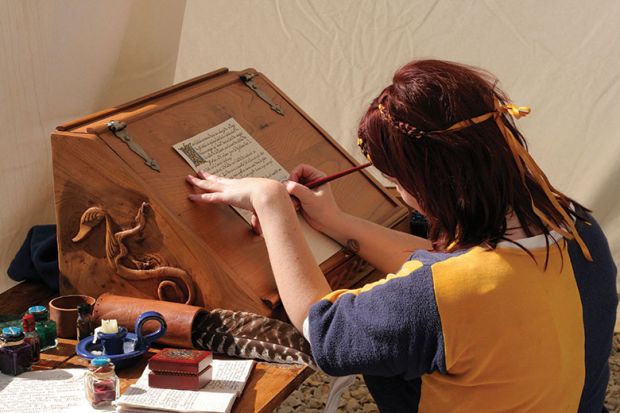
Welcome to our comprehensive guide on conquering the art of flash fiction writing.
In this article, we will unveil the top 10 strategies that will empower you to craft captivating and impactful stories within the confines of brevity.
Through the mastery of character development, plot construction, dialogue utilization, and more, you will gain the skills necessary to navigate the exciting world of flash fiction.
Join us on this journey as we unlock the secrets to creating memorable and compelling narratives in just a few short words.
Crafting Memorable Characters
Creating captivating and relatable characters is essential for mastering the art of flash fiction writing. Character development and character arcs are crucial elements that can elevate a flash fiction story from ordinary to extraordinary.
In the limited space available, it is important to create characters that immediately capture the readers' attention and evoke strong emotions. By carefully crafting their personalities, desires, and flaws, authors can make their characters feel real and relatable, even in a short amount of time.
Additionally, incorporating character arcs adds depth and complexity to the story. Characters who undergo growth, change, or transformation throughout the narrative can leave a lasting impact on the reader. Whether it's a surprising twist or a profound revelation, character development and arcs can make the difference between a forgettable flash fiction piece and a truly unforgettable one.

Mastering the Art of Conciseness
With careful editing and thoughtful revision, writers can achieve brevity and clarity in their flash fiction stories, while still conveying a powerful and impactful message. Developing concise prose is essential to maximize the impact of flash fiction.
Here are five strategies to help writers master the art of conciseness:
Eliminate unnecessary words: Cut out any words or phrases that do not contribute to the overall message or characterization.
Use strong verbs: Replace weak verbs with more vivid, action-packed ones to create a dynamic narrative.
Show, don't tell: Instead of explicitly stating emotions or thoughts, use vivid descriptions and sensory details to allow readers to experience the story firsthand.
Utilize dialogue effectively: Let conversations between characters convey information and drive the plot forward, rather than relying on lengthy exposition.
Create a strong opening and ending: Grab readers' attention from the start and leave them with a lasting impression by crafting impactful beginnings and endings.

Creating Powerful Beginnings
Every aspiring flash fiction writer should strive to capture readers' attention from the very first word and yet, with a limited word count, it becomes crucial to carefully select the most impactful and engaging opening sentence.
Crafting intriguing openings is an art form in itself. The opening line sets the tone, establishes the setting, introduces the character, or poses a question, all within a few words. To capture the reader's attention, consider starting with a provocative statement, an unexpected action, or a vivid description. Experiment with different styles and techniques, such as starting in medias res or using dialogue to create immediacy.
Developing Compelling Plots
To craft a truly captivating flash fiction piece, one must delve deep into the art of developing compelling plots through careful planning and strategic storytelling techniques. Here are five tips to help you in this endeavor:
Create a strong hook: Begin your story with a captivating opening that grabs the reader's attention and sets the tone for the rest of the piece.
Develop unique settings: Transport your readers to unfamiliar, intriguing environments that add depth and interest to your plot.
Explore unconventional narratives: Break away from traditional storytelling structures and experiment with nonlinear timelines, multiple perspectives, or other unconventional techniques to keep your readers engaged.
Build tension and suspense: Keep the reader guessing by incorporating unexpected twists, conflicts, and unresolved questions into your plot.

Craft satisfying resolutions: While flash fiction allows for brevity, ensure that your story reaches a satisfying conclusion that leaves a lasting impact on the reader.
Symbolism and metaphor are powerful tools in the art of flash fiction writing. By employing these techniques, writers can convey deeper meanings and evoke emotions in their readers.
Symbolic storytelling allows for layers of interpretation, while the use of impactful metaphors creates vivid and memorable imagery.
Understanding the impact and application of symbolism and metaphor can elevate flash fiction writing to new heights.
Symbolic Storytelling Techniques
One effective technique in storytelling is the use of symbolism and metaphor to convey deeper meanings and evoke emotional responses from readers. Symbolic storytelling techniques allow writers to create a rich and layered narrative that goes beyond the surface level. By incorporating figurative language techniques, such as metaphors and allegories, writers can add depth and complexity to their stories.
Here are five ways to utilize symbolic storytelling techniques:
- Objects as symbols: Choose objects that represent abstract concepts or emotions to add symbolism to your story.
- Colors as symbols: Use colors to convey mood, emotions, or themes in your narrative.
- Animals as symbols: Assign symbolic meanings to animals to enhance the meaning of your story.
- Nature as symbols: Utilize elements of nature, such as weather or landscapes, to symbolize characters' internal states or external conflicts.
- Actions as symbols: Use characters' actions or gestures to symbolize their motivations, desires, or inner struggles.
Five key strategies for harnessing the power of metaphors and utilizing symbolism in writing can elevate the impact and depth of a narrative.

Figurative language techniques, such as metaphors and symbolism, enable writers to convey complex ideas and emotions in a concise and engaging manner.
By using metaphorical language, writers can create vivid images that resonate with readers and evoke powerful emotions.
Symbolic language analysis allows writers to imbue their stories with deeper meaning and layers of interpretation.
Through the strategic use of symbols, writers can explore universal themes and invite readers to contemplate the deeper truths of the human experience.
Impact of Visual Imagery
Through the deliberate incorporation of visual imagery, writers can effectively harness the power of symbolism and metaphor to captivate readers and evoke profound emotional responses. Visual storytelling techniques play a crucial role in flash fiction, allowing writers to create vivid and memorable scenes within a limited word count.
By utilizing sensory details, such as sights, sounds, smells, tastes, and textures, writers can transport readers into the world of their story, making it more immersive and engaging.
Here are five ways in which visual imagery can enhance the impact of flash fiction:

- Using vivid descriptions to paint a vivid picture in the reader's mind
- Employing symbolic objects or settings to convey deeper meaning
- Incorporating metaphorical language to evoke strong emotions
- Creating visual contrasts to highlight important themes or ideas
- Using sensory details to enhance the overall sensory experience for the reader.
Exploring Different Points of View
By delving into various perspectives, writers can effectively convey their stories and captivate readers through the art of flash fiction. One of the most powerful tools in achieving this is through the use of multiple perspectives. By presenting different viewpoints, writers can offer readers a more comprehensive understanding of the story's events, characters, and themes.
This technique adds depth and complexity to the narrative, creating a richer and more engaging reading experience. Additionally, exploring different points of view allows writers to experiment with narrative voice, further enhancing the storytelling. Whether it's through first-person accounts, third-person omniscient narration, or even through the eyes of multiple characters, the use of different points of view in flash fiction can push the boundaries of creativity and offer readers a unique and thought-provoking literary experience.
Using Dialogue to Drive the Story
Within the realm of flash fiction writing, employing dialogue as a narrative tool proves to be an effective means of propelling the story forward and captivating readers. Dialogue has the power to reveal character traits, convey emotions, and add depth to the plot.
Here are five effective dialogue techniques to drive the story:
Show, don't tell: Dialogue allows characters to interact and reveal information through their conversations, creating a more engaging and immersive experience for readers.
Use subtext: Characters can say one thing while meaning something entirely different, creating tension and intrigue within the story.
Use dialogue tags sparingly: Balancing dialogue and narration is crucial. Use dialogue tags only when necessary to avoid overwhelming the reader.

Vary sentence structure and length: Mimic natural speech patterns by using short, snappy sentences or longer, more descriptive ones to add rhythm and authenticity to the dialogue.
Incorporate conflict: Dialogue that showcases disagreements or opposing viewpoints can drive the story forward and create tension between characters.
Building Tension and Conflict
Building tension and conflict is crucial in flash fiction writing as it keeps readers engaged and invested in the story.
One effective way to achieve this is by exploring the characters' motivations and conflicts, as these drive the narrative forward and create a sense of urgency.
Additionally, incorporating suspenseful plot twists can further heighten the tension, leaving readers on the edge of their seats and eager to discover what happens next.
Character Motivations and Conflicts
The exploration of character motivations and conflicts is essential for creating tension and conflict in flash fiction. By delving into the internal struggles and external obstacles that drive the characters, authors can captivate readers and keep them engaged till the very end.
Here are five strategies to effectively build tension and conflict through character motivations and conflicts:

Contradictory Desires: Give your characters conflicting desires, forcing them to make difficult choices.
Past Traumas: Uncover the deep-rooted traumas that shape your characters, driving their actions and decisions.
Moral Dilemmas: Present characters with ethical choices, where each option carries significant consequences.
External Threats: Introduce external forces that pose a threat to the characters' goals and desires.
Hidden Secrets: Reveal secrets that characters are desperate to keep hidden, creating tension and potential conflict.
Creating Suspenseful Plot Twists
To effectively engage readers and keep them on the edge of their seats, employ a combination of unexpected plot twists and strategic use of tension and conflict.
Creating suspenseful plot twists is an art that requires careful planning and consideration of the narrative structure. One way to achieve this is by introducing unexpected revelations that turn the story on its head. These revelations could be shocking secrets, hidden motives, or unforeseen alliances. By strategically placing these plot twists throughout the story, you can build tension and keep readers guessing.

Conflict is another powerful tool in creating suspense. Introduce conflicts between characters or within the protagonist's own mind to heighten the stakes and keep readers invested.
Embracing Constraints and Limitations
One crucial aspect of mastering the art of flash fiction writing is understanding and working within the inherent limitations and constraints of the genre. Embracing limitations and pushing boundaries is what sets flash fiction apart from other forms of storytelling.
Here are five strategies to help you embrace constraints and create compelling flash fiction:
- Utilize a limited word count to focus on the essence of your story.
- Experiment with unconventional narrative structures to engage readers.
- Embrace the power of suggestion by leaving gaps for readers to fill in.
- Harness the intensity of a single moment or event to create impact.
- Use constraints as opportunities for creativity, forcing you to think outside the box.
Editing and Polishing Your Flash Fiction Stories
Polishing your flash fiction stories requires carefully scrutinizing every word and phrase, as well as incorporating feedback from trusted sources to enhance the overall quality of your work.
To begin, effective self-editing techniques are crucial in ensuring that your story is concise and impactful. Start by reviewing your story for clarity, eliminating any unnecessary words or phrases that may weaken the prose. Pay attention to sentence structure, ensuring that each sentence flows smoothly. Additionally, check for consistency in tone and style throughout the piece.
Once you have completed your self-editing, it is essential to seek feedback from others. Trusted sources can provide valuable insights and help identify areas for improvement. Actively listen to their suggestions and consider implementing changes that strengthen your story's impact.
Frequently Asked Questions
To effectively use symbolism and metaphor in flash fiction writing, one must carefully choose and craft these literary devices to add depth and meaning to the story. By employing strategic placement and subtle hints, the reader can engage with the narrative on a deeper level.

What Are Some Different Points of View I Can Explore in My Flash Fiction Stories?
Exploring different points of view in flash fiction stories allows for a diverse narrative structure and character development. By experimenting with first person, third person, or even multiple perspectives, writers can create engaging and dynamic narratives that captivate their audience.
How Can I Use Dialogue to Drive the Story in My Flash Fiction Writing?
Dialogue in flash fiction can be a powerful tool for character development and creating suspense. By using realistic and engaging conversations, writers can reveal emotions, motivations, and conflicts that drive the story forward, capturing the reader's attention.
How Do I Build Tension and Conflict in My Flash Fiction Stories?
Creating suspense and conflict in flash fiction stories involves developing complex characters and crafting compelling situations. By carefully controlling pacing, utilizing vivid descriptions, and using unexpected plot twists, writers can build tension that keeps readers engaged and eager for resolution.
What Are Some Constraints and Limitations I Can Embrace to Enhance My Flash Fiction Writing?
Embracing constraints and limitations can enhance flash fiction writing. By imposing time constraints, writers are forced to focus on concise storytelling. Additionally, limiting character development allows for more impactful and memorable narratives.
 Writing TipsCreative WritingJournalingSketching TechniquesBuying GuidesPrivacy PolicyTerms And Conditions
Writing TipsCreative WritingJournalingSketching TechniquesBuying GuidesPrivacy PolicyTerms And Conditions
